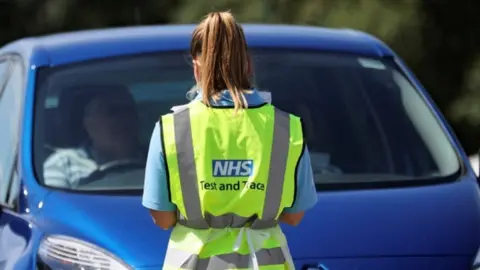Coronavirus: Sandwell on 'area of concern' list
 Reuters
ReutersSandwell has been named as an area of concern by Public Health England (PHE) following a rise in the number of coronavirus cases.
In the last two weeks, 173 people have tested positive for the virus in the borough.
Council officials are urging those who are shielding to continue doing so, and residents are being strongly advised not to go inside other people's homes.
Sandwell Council's deputy leader said the situation was "very serious".
The local authority held an emergency meeting on Friday as the area was added to the official watchlist and called for residents' help in a bid to avoid a local lockdown.
The latest figures saw Sandwell's rate of infections rise to 28.1 per 100,000 people in the week up to 27 July, up from 26.9.
However, the rate is still less than half that of Blackburn & Darwen, England's current hot spot, while areas such as Leicester, Oldham, Bradford and Pendle all saw much higher rates of infection.
In recent weeks, Smethwick has been seen as the centre of the outbreak in Sandwell, but figures presented to the emergency council meeting on Friday showed the rate of infections in West Bromwich was almost as high.
While a rate of 4.5 infections per 10,000 people was registered in Smethwick for 22-28 July, West Bromwich was 4.1. Far above the 0.2 in Rowley Regis.
Maria Crompton, deputy leader of Sandwell Council, called on anyone with symptoms to get a test and self-isolate immediately.
She also asked those shielding to keep doing so, despite a national "pause" being introduced at the weekend.
"We know people are looking forward to going out again but we're really strongly advising people who are shielding to stay put for now and go out as little as possible," she said.
"Area of concern" is the lowest level on the PHE watchlist, which helps guide the national response to the pandemic.
It reflects not just the highest weekly incidence rate and trend in areas, but also experts' advice and local plans to tackle the spread.
Allow X content?


Follow BBC West Midlands on Facebook, Twitter and Instagram. Send your story ideas to: [email protected]
